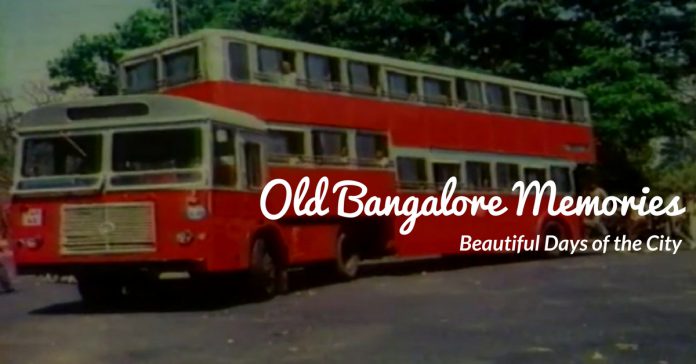
It was a time when Bengaluru was Bangalore and undoubtedly the heaven on earth. The entire image of the city was on a different scale and today’s Bengaluru is nowhere in comparison to the beauty of old Bengaluru. Everything was cool and calm with no traffic grievances and absolutely no much chaos. As the city grew and embraced the IT revolution, there was a drastic change in the way the city was contemplated at. In this context, Poonam Singh has shared her experience of living in Old Bangalore – The Way It Was. Come let us know how our Bangalore was in the late 70s and 80s on today’s read.
A 30 Feet View Of Old Bangalore
Bengaluru had many names; pensioners paradise, the only place where you don’t need a fan in summer, the walking city. Well, no more. With the opening up of the city in the name of “The Information Technology,” Bangalore changed.
I am a dyed in the wool Bangalorean who was born here and has lived here all my life. I lived in what is defined as CBD before moving to Koramangala in the late 70s. Any area outside the radius of 5 km was outskirts, as was Koramangala. Even as early as the 1970s there were no takers for houses in Koramangala. BMTC was then called as BTS (Bangalore Transport Service buses) did not ply frequently to the area. If you missed the bus which went to Koramangala – which ran maybe 3 times a day, you were compelled to take a bus till Audugodi or Check post ( I will come to where that is in a minute) and hoof from there.

Autos flatly refused to go to Koramangala. Check post was “Madiwala check post” which was right at the apex of the traffic signal of Hosur Road, Dairy Circle road near Jyoti Nivas College. In fact, Jyoti Nivas College had moved to Koramangala from their building in Frazer Town and that was a big set back. Nobody wanted to send their girls so far away! To ensure the girls got home before dark, the college timings were set in such a way that they finished at 3 pm and used BTS buses ( commissioned by the college) to take the girls back into town.
Years Ago
Let me go back a few more years when I was much younger, still in school. The only easy means of transport were cycle rickshaws where a rickshaw man pulled you by cycling. It was very common for school kids to be picked up in rickshaws and yes, you could see school bags and bottles hanging all over And each rickshaw could take 6 to 7 kids along!!! The other means of transport which was dying out even then were the Jhatkas. These were horse-drawn carts. You squat on the floor along with the jhatka driver and went to your destination. There was a jhatka stand on Richmond Road (next to Cathedral School), you could find and rent jhatkas from there and it was quite alright to feed the horse some hay or grass.

Ambassadors, Fiats and Lunas
The other modes of transport were private cars, not many of those were around and if they were, they were Fiats or Ambassadors only. If you were from a very affluent family then you had an imported car. It was very common for people to cycle from one place to another using paraffin lamps to light up the road in the dark. Do remember these were basic bicycles – you wore a chain guard to keep your trouser edges from catching grease from the cycle chain. Simple times!
Also Read: 22 Awesome Things about Bengaluru in the late 90s
These lamps were lit with kerosene. I really am not sure how much of the road they actually lit up. Double riding was accepted. This was you could ride pillion on your dad’s cycle or sit in the front of the crossbar. Cycles gave way to mopeds – the first ones in Bangalore were Lunas, Suvegas, and Hero Majestics. I rode a Hero Majestic to college and there was ample parking as only 3 or 4 girls actually came to college on a moped! They ran on petrol but you could actually pedal them to a bunk if you ran out of gas. It was again very common to go “doubles” on these contraptions; there were the Lambrettas and Vijay scooters as well which older people used.
I have attempted to give you a 30 feet view of Old Bangalore. If you relate to any of these then do post your comments below.
This article is contributed by Poonam Singh, Bengaluru.
Like and follow MetroSaga on Facebook | Instagram
You can also Subscribe to MetroSaga for newsletters.
























